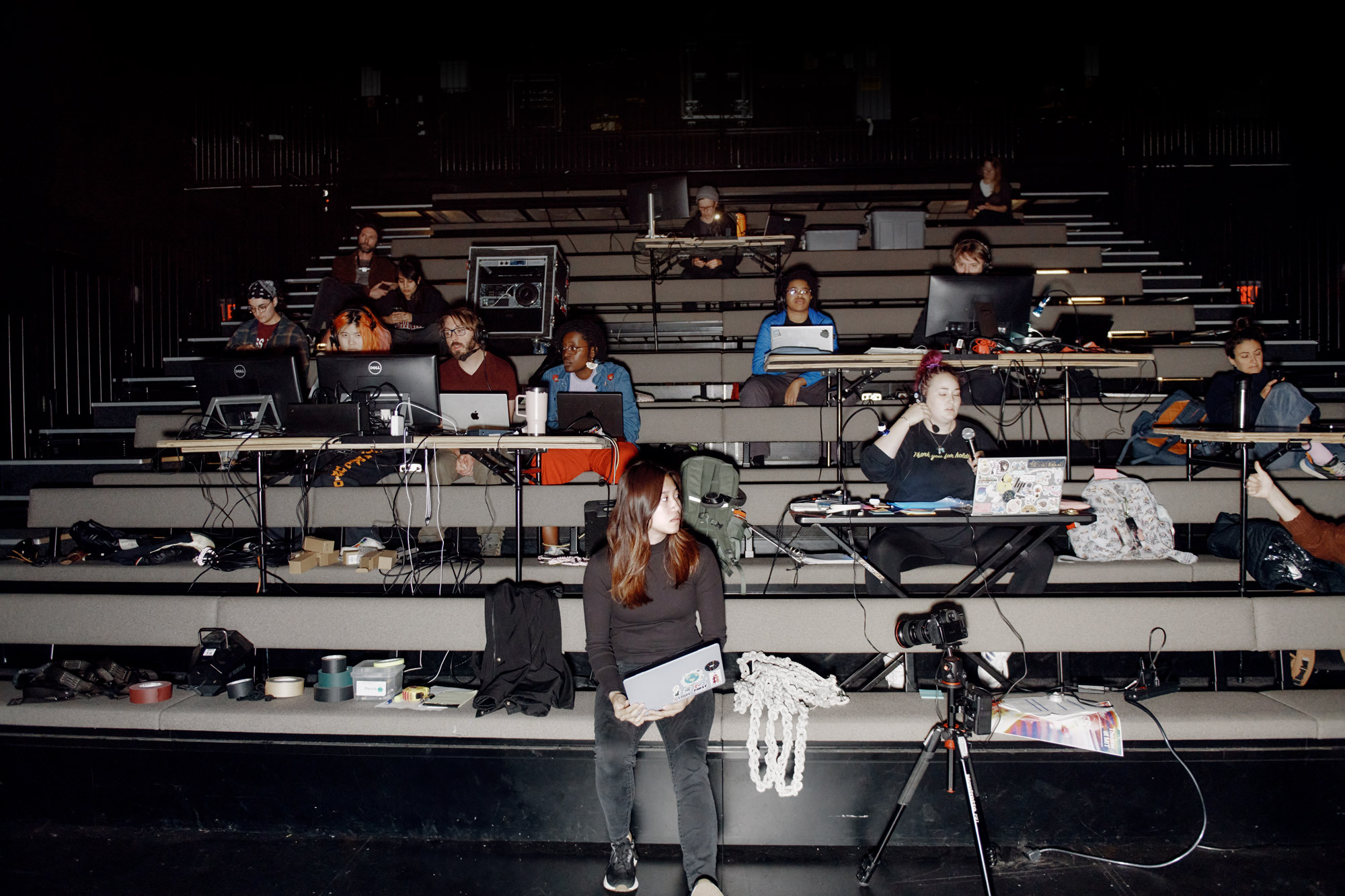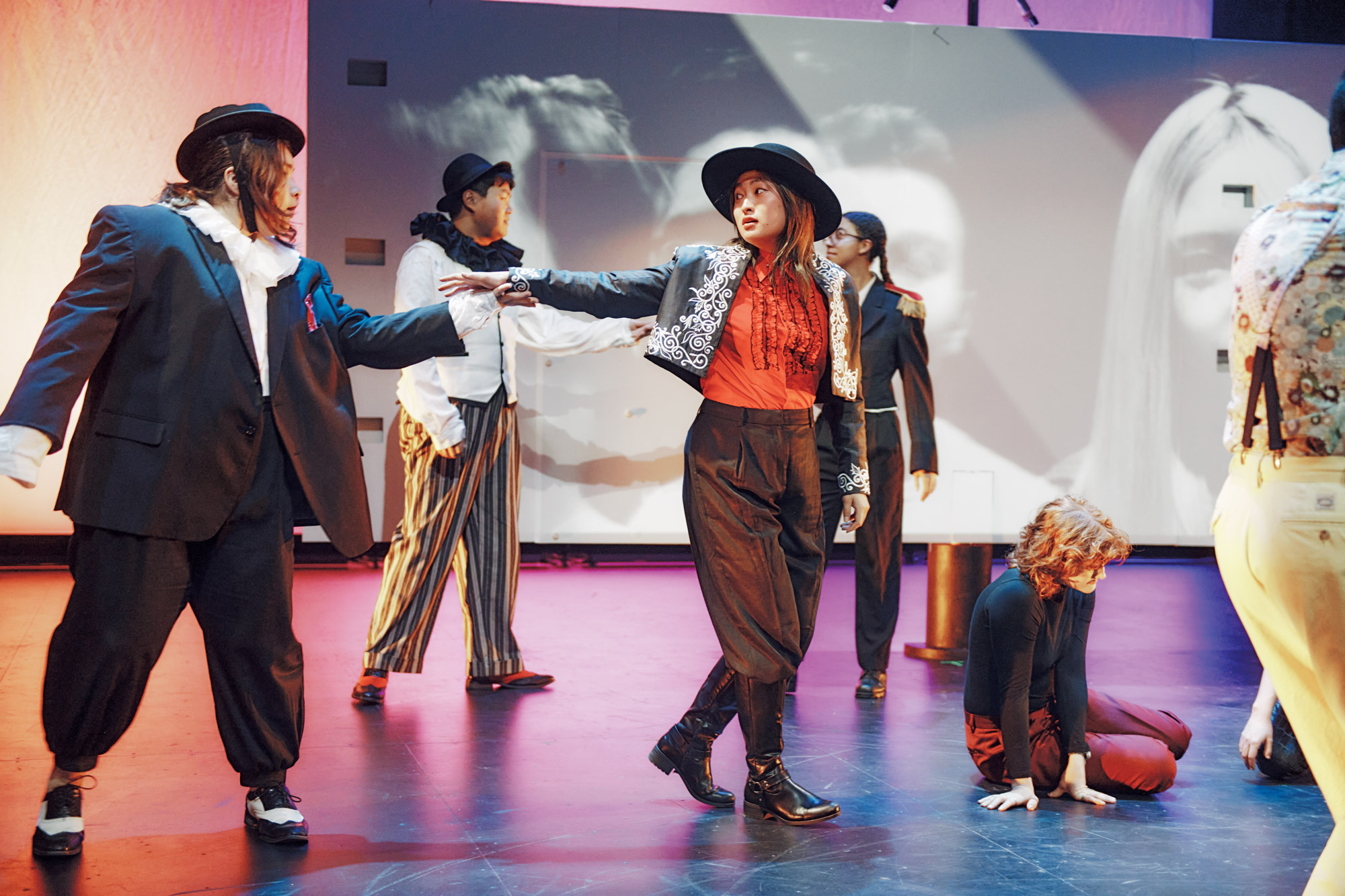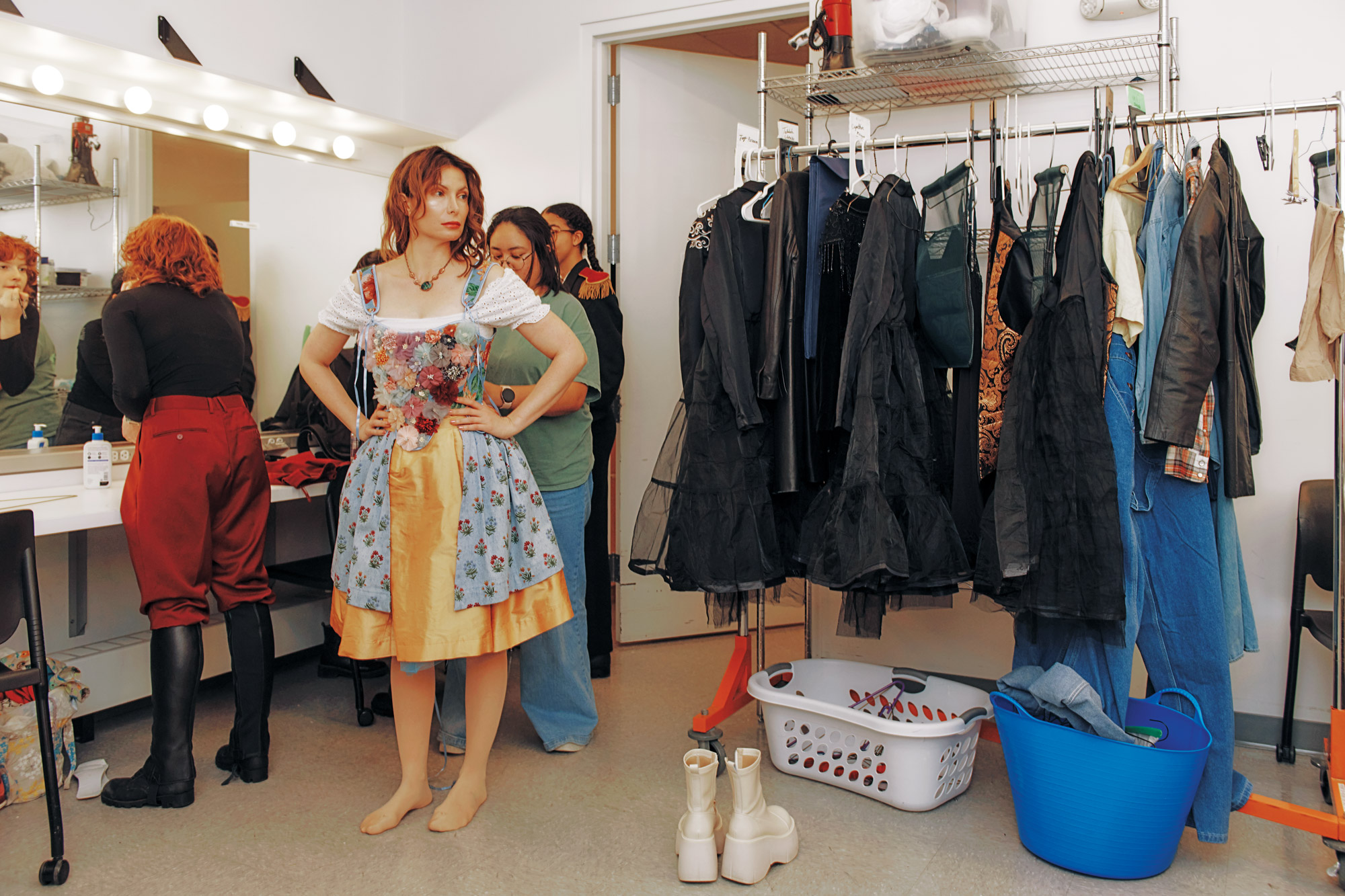
MIT students conduct a technical run-through of La Vida es Sueño (Life Is a Dream) in preparation for a string of performances in the Theater Arts Building in November 2024.
PHOTO: TONY LUONG
In November 2024, the dense classical text—written 400 years ago and often referred to as a Spanish-language Hamlet—sprang to modern life in a run of performances in MIT’s Theater Arts Building. Rubio was determined to preserve the classic themes that have kept the play well known in the 400 years since its writing.
“That’s one of my things—how do we make language fresh? And how do we make these classical texts accessible to all of us?” says Rubio. “So I ran the risk of doing a classical, language-based play. And then on top of that I said, ‘OK, we’re not only going to do something that has poetry, we’re going to do it in two languages.’”
That kind of experimentation is right at home in the MIT Theater Arts program. Some may be surprised to discover that MIT has a flourishing theatrical landscape. But from the academic program to student-run groups, theater production offers undergraduates many opportunities to access their creativity.
The first known theater production at MIT was Eugene O’Neill’s The Hairy Ape in 1927, according to Jay Scheib, professor and section head for Music & Theater Arts, and the first director of dramatics was appointed in 1934. Academic offerings began in the 1980s, and the Institute officially established a major in Theater Arts in 2015. During the 2023–2024 academic year, more than 1,200 students were involved in theater in some capacity.
“We offer a bachelor of science in theater at MIT, which is a fundamentally deeper dive than the more traditional BA,” Scheib says. “But what really separates us from other schools are the many hands-on interactions with new and emerging technologies. Our program is really focused on preparing students to imagine and create in ways that we have not yet discovered, and this ethos of innovation is a very special part of the MIT fabric.”
A thriving and evolving scene
Treating theatrical subject matter with the same academic rigor as other subjects gives students a chance to challenge themselves outside their comfort zones.
“There is creative expression [in regular classes], but it’s bound by different technicalities and constraints,” says Mustafa Al-Obaidi ’25, a mechanical engineering major and theater minor, and an actor portraying La Vida es Sueño’s main antagonist. “The theater scene at MIT is really thriving and evolving, and there is such big room for collaboration.”
Collaboration was key to Rubio’s successful staging of a seventeenth-century Spanish-language play. Speaking in both Spanish and English, the actors imbued their performances with a physicality informed by improvisations they worked on during their class 21T.100 Theater Arts Production, tapping into emotions churned up by aspects of the text and linking them to experiences in their own lives.
Claudia Elena Varela PhD ’22, a member of the Boston-based dance company Danza Orgánica, helped students incorporate these and other movements into the action of the play to guide the audience through the story even if they didn’t always understand the words.
Unusual physicality is a hallmark of MIT Theater Arts productions, along with technical aspects such as video boards and inventive lighting cues. The theater program emphasizes the MIT ethos of risk-taking and experimentation. Many of the faculty and staff have a background in experimental theater, with some coming from New York City’s downtown theater communities.
“People here are working at a really great level and with abandon,” says Rubio. “It’s because of the curiosity that exists in the room, in the students. That is something about the experience here that’s very, very cool.”
The “fire and confidence” to go for it
For Al-Obaidi, being on stage for La Vida es Sueño helped him battle back imposter syndrome in the classroom.
“There’s a lot of leaps of faith in theater where it’s like, OK, you rehearse something, you do it, you practice it, you make it better and then just jump on stage in front of an audience and do it, do whatever is going to happen,” he says. “It has given me this space and the sort of fire and confidence to just go for things.”
“The arts play an invaluable role in any landscape but especially in ours. Where we are known at MIT for science and technology, we are also increasingly known as a place where science and technology is meaningfully integrated into the performing arts in unexpected and exciting ways,” says Scheib. “Here we find ourselves regularly engaged in innovative collaborations that lead to fresh ways of reimagining the expressive potential of performance.”


